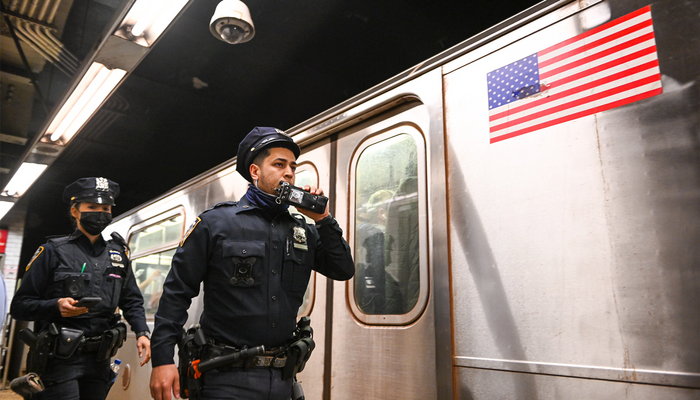The IG is struggling to continue providing its necessary oversight amid a series of challenges that have impaired its operations. There are four main issues that must be addressed to allow the office to fulfill its duties.
Diminishing and Delayed Output
Over the years, the number of IG-initiated investigations has significantly declined. Leaving aside statutorily mandated reports, in the first five years after it opened its doors in 2014, the office published 12 investigative reports. In the last four years, it has released only three.
While some of the slowdown may be attributable to the pandemic and staffing issues, several investigations have been held up for far longer, with three pending since before 2020. One critical investigation, a review of the NYPD’s gang database, was open for almost five years. The database is a list of individuals the NYPD believes to be affiliated with gangs. These databases have long been of concern to civil rights and community groups across the country. Indeed, cities such as Chicago and Los Angeles have abandoned the use of similar gang databases after finding false data, racial bias, and concerns about unfounded gang designations being shared with other city and federal agencies, including immigration authorities.
After multiple requests from local advocacy organizations and city council members, the IG finally opened an investigation into the database in 2018, although it did not make this decision public until 2021. Last year, current DOI Commissioner Jocelyn Strauber assured the city council that the report would be published before 2023. It was finally released on April 18, 2023, five years after it was started.
The IG confirmed that 99 percent of the over 16,000 individuals in NYPD’s gang database are Black or Latino. Of those, 10 percent are minors, with some children added to the database at 11 years old. The report showed that police use vague criteria for tagging New Yorkers as gang members and that even these loose standards are often not followed. The IG found that social media–based justifications for gang designations were “cursory, conclusory, and failed to include sufficient detail . . . in a number of instances, certain emojis, alone, or photographs of individuals in the company of known gang members, without more detail, were deemed sufficient.”
This is hardly surprising given that, according to the IG, the police lack written policies or guidance for what types of information warrant inclusion in the database. Similarly, even though the NYPD requires that names be deleted from the database after two to three years if there is no further contact with law enforcement, there is no clear written guidance as to the nature and quality of such contact, resulting in the department providing little to no justification for keeping names on the list. And the department is often late in conducting reviews to boot, making it harder to promptly identify and remove people who have been needlessly included in the database. These findings echo long-standing arguments by advocates that the gang database is arbitrary and targets people of color.
The IG’s report, however, conspicuously fails to address the consequences of being tagged as a gang member. The report says it “could not identify a relationship between inclusion in [the database] and any individual adverse outcomes.” But the IG does not appear to have independently examined the issue by, for example, cross-referencing the names on the list with other records or interrogating how the thousands of patrol officers who have access to the database use its contents in the course of conducting stops. The reasons for these shortcomings are not detailed, but together with the protracted delay in the report’s release, they surely raise questions about the extent to which the report was insulated from NYPD pressure.
The IG’s office also issues periodic reports that are required by statute, including its annual report and so-called Section 808 reports, which evaluate information on police misconduct. The IG is mandated to complete an annual audit of police compliance with the POST Act, which requires the police to provide information about its surveillance tools. These types of reports have made up half of those issued by the office since 2019. While they have mostly been released in a timely fashion, the first POST Act audit was issued over a year late in November 2022, and only in the face of pressure from the city council and advocacy groups. It was ultimately a very valuable undertaking, highlighting the NYPD’s pro forma approach to its own reporting obligations and pointing out deficiencies in the language of the POST Act that allow the NYPD to sidestep surveillance oversight.
Leadership and Staffing
A permanent inspector general is critical to ensuring that this important office has the leadership necessary to navigate relationships and provide direction and support to staff. But since late 2021, the office has been led by an acting inspector general. A 2022 job offer to former Brooklyn District Attorney Charles Guria was rescinded after allegations of sexual harassment.
The IG position, which was reposted in November 2022, requires only four years of postgraduate experience, far less than Eure’s impressive 14-year stint leading the DC Office of Police Complaints. While this is the minimum requirement, it hardly suggests to potential candidates that the city is seeking the type of seasoned leader the office needs.
The number of staff working for the IG has fallen from 38 at its peak in 2017 to around 18 today, with funding earmarked for only 22 positions for this year. According to reports from former IG staff, over the years, the NYPD’s stonewalling of IG investigations and the DOI’s recommendation that the IG be merged with the Civilian Complaint Review Board lowered office morale and drove experienced staff to leave. Staff attrition has only been compounded by the pandemic and a city-wide hiring freeze. Thus, a mere 18 individuals without the leadership of an actual inspector general are tasked with overseeing the policies and practices of a police department of 55,000 personnel.
Access to Information
Since the IG became operational, the NYPD has sought to prevent the office from obtaining information and has obstructed the office’s ability to conduct its investigations.
According to former Inspector General Eure, NYPD stonewalling has had “a tremendously negative impact on [the work of the IG] and has slowed production” of investigative reports. For example, during the investigation for its 2018 report on NYPD litigation data, the IG was unable to update and verify findings because the police refused to provide certain information and interfered with interviews. And during the IG’s investigation of the Civilian Complaint Review Board’s access to body-worn camera footage of police misconduct incidents, the NYPD refused to make representatives available for interview, instead insisting on submitting a written memorandum.
Eure’s assessment was echoed by the staff in his office. Over a dozen employees told ProPublica that the NYPD “restricted the Inspector General’s access to records and witnesses, withholding information the office was legally entitled to, excessively redacting material or providing it in formats difficult to review, instructing witnesses to cancel interviews and delaying requests for as long as two years.”
The police have even discouraged officers from cooperating with the IG. The former deputy chief of the NYPD’s Special Victims Unit claims he was told to slow-walk requests for information and “give one-word answers,” was “scolded” for telling the truth, and was demoted in retaliation. In 2018, the relationship between the NYPD and the IG was so broken that Eure wrote to the police commissioner recommending disciplinary action against NYPD lawyers who had obstructed an investigation by directing witnesses called by the IG not to appear.
The NYPD has at times justified its recalcitrance in producing documents and witnesses on the theory that the IG’s authority to access information from city agencies is narrower than that of the DOI under mayoral Executive Order 16. The order authorizes the DOI to “examine, copy or remove any document prepared, maintained or held by any [City] agency” and to take testimony from other agency employees in order to fulfill its responsibility for the “investigation and elimination of corrupt or other criminal activity, conflicts of interest, unethical conduct, misconduct and incompetence.” According to the police, this authority only extends to the DOI’s investigations of misconduct, not to the IG’s “policy and practice” systemic investigations.
There is no merit to this theory. E.O. 16 does not distinguish between different types of investigations, and other inspectors general within the DOI also carry out (albeit to a lesser extent) these types of systemic reviews. Moreover, even a cursory glance at laws establishing federal and local law enforcement inspectors general reveals they employ language similar to that of E.O. 16, under which these offices conduct the same types of systemic policies and practices investigations for which the NYPD IG was created. The DOI, too, has made clear that the IG’s “authority on paper is already extensive and thorough” and its investigations “employ the same evidence-gathering tools as other DOI investigations,” including those under E.O. 16.
Practical barriers erected by the police mean that the NYPD IG has less access to information than the other inspectors general within the DOI and across the country. Many inspectors general within the DOI have direct access to the personnel, facilities, records, and databases of the city agencies that they oversee. This is also typical for police inspectors general in other cities. The Los Angeles Police Department IG, for example, has direct access to the LAPD’s risk management database, and the Seattle Police Department IG has direct access to police investigation files. The NYPD IG, however, must negotiate access by submitting information requests through the Inspector General Compliance Unit, which a former deputy inspector general termed the “gatekeeper for access.” But even this unit does not often have the authority to provide records, with real decision-making power lying with the NYPD Legal Bureau or other executives. This bureaucratic arrangement — which is only imposed on the NYPD IG — naturally contributes to slower and less fulsome production of information.
Independence and Autonomy
Locating the IG within the DOI was intended to strengthen the office’s investigative authorities and has often worked in support of oversight. But this structure has caused tensions as well. As the DOI itself acknowledged in its 2020 report, DOI’s core mission requires regular collaboration with the NYPD, which could lead to a perceived lack of independence.
While some back and forth between the DOI commissioner and the IG is to be expected, press reports suggest that the DOI commissioner has exercised inordinate control over the IG’s public communications, investigations, and reporting. The reports allege that then-DOI Commissioner Peters prevented the IG from opening an investigation into the NYPD’s gang database and kept reports from being released, including ones about officers lying under oath and an unconfirmed report on the NYPD’s vice unit.
In another sign of the IG’s apparent subordination, the DOI published a report in 2020 under its own name on the police response to protests over the killing of George Floyd. While the report was thorough and provided useful recommendations, its subject matter falls clearly within the IG’s mandate, and publishing it as a DOI report may be seen as undermining the IG’s role and authority as the NYPD’s overseer. The DOI has also changed the structure of the office so that the IG no longer reports directly to the DOI commissioner as it did until last year. Instead, the IG reports to the DOI commissioner through the deputy commissioner/chief of investigations and the first deputy commissioner. This arrangement risks hampering the IG’s ability to quickly elevate access issues with the NYPD for resolution, a problem that is not common with the other inspectors general within the DOI.
The IG’s web presence has also been downgraded. Its Twitter account, an important source of information on filing complaints and new reports, went dark between 2018–2022, only posting one retweet in 2020 about the DOI’s investigation into the George Floyd protests. And its separate website is now a webpage nested within the DOI’s website.




